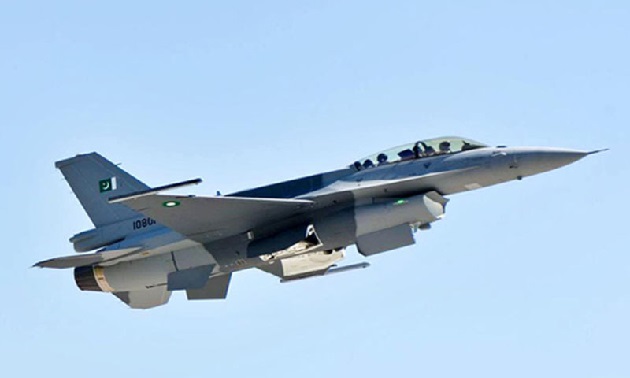By Saima Ali
In today’s world, air supremacy plays a vital role in achieving Military Objectives. The Pakistan Military has always been mindful of its meager resources and preferred quality over quantity. The Pakistan Air Force is considered one of the best in the world due to its qualitative selection and professional excellence. The maintenance of this equilibrium depends on the continuous upgrading of its fleet.
The Pakistan Air Force currently operates a fighter force comprising F-16s, Dassault Mirage IIIs and 5s, Chengdu F-7s, and JF-17s. F-16s, with their tactical nuclear delivery capabilities, play a particularly important role for Pakistan in bolstering its conventional abilities against India.
The Indian lobby is trying to isolate Pakistan within Washington’s power corridors, which may jeopardize the sale of more F16 to Pakistan. If so, Pakistan should seek to purchase Sukhoi Su-35 fighter jets that are far more advanced than the F-16s. The Russian-made jets could be a great asset for Pakistan Air Force.
The general comparison between the Russia’s Su-35 Fighter and America’s F-16 Fighting Falcon shows that with properly trained pilots and support from ground controllers or AWACs, the Su-35 is an extremely formidable threat to Western Aircraft.
Over the years, the F-16 has evolved from a lightweight visual range dogfighter into a potent multi-role warplane that flies a gamut of missions ranging from the suppression of enemy air defences to air superiority. Though it has been operational since 1980, the “Falcon” continues to evolve and will remain in service with the US Air Force and other militaries for decades to come.
But while the F-16 remains a potent fighter, potential adversaries have caught up the latest Russian aircraft like the Sukhoi Su-35 can match or exceed the Falcon in many respects. The F-16 doesn’t have the latest upgraded massive active electronically scanned array (AESA) radar nor can the F-16 usually lob the AIM-120 missile from high speeds and altitudes.
The US Air Force F-16s are not currently fitted with an AESA and are at a severe disadvantage versus the Su-35 or other advanced Flanker derivatives. With an AESA, the F-16 could probably hold its own against the Su-35 at longer ranges but it would still be a challenge. At shorter ranges, it comes down to pilot skill and the performance of each jet’s high off-boresight missiles. The advent of missiles like the R-73 and AIM-9Xhave turned visual range fights into mutually assured destruction scenarios.
While the Su-35’s thrust vectoring gives it an edge at very low speeds, it’s not an insurmountable problem for an expert F-16 pilot who knows how to exploit his or her aircraft to the fullest to overcome. The bottom line is that the Su-35 is an extremely capable aircraft. With regard to the F-16s or Su-35s, the matter of Pakistan of adding additional fighters to its current fleet might come down to mundane matters of what is financially feasible.
Currently, the Indian Air force (IAF) is far larger with about 740 combat aircraft versus the Pakistan Air Force’s (PAF) approximate 400 aircraft, but everything is not as it seems.
What at first glance seems overwhelming odds against the PAF on closer examination does not seem as overwhelming. For instance, the IAF has far lower serviceability of its aircraft.
Their pilot training as evidenced by Red Flag exercises with the US is also not yet up to par with the PAF and their maintenance crews are not as diligent. Their present Russian/Soviet technology is generally less reliable and less effective and a large part of their fleet of MiG-21s and MiG-27s are outdated.
PAF aircraft are either of Western stock or Chinese and are far more maintenance friendly. Pakistan has also been upgrading their aircraft massively and have incorporated a complex combination of technology from across the globe from China to Brazil, from South Africa to the US. PAF pilot training is on par with the best in the world and its maintenance crews are trained on the level of Western maintenance crews.
The large number of IAF crashes because of low level of maintenance crew is indicative of this acute problem with one of the highest crash rates among Air Forces of the world. What compounds this problem is the age of large sections of the Indian fleet, which has large numbers of MiG-21s and MiG-27s that are, besides the Bisons, highly outdated and are sometimes referred to as “Flying Coffins” by their pilots.
Pakistan, on the other hand has a better pilot-to-aircaft ratio than the IAF meaning it could sustain a greater sortie rate over a protracted conflict. PAF aircraft are also “pimped” in that they have been extensively modified. Thus, while on paper PAF is flying ancient Mirages that were bought second-hand from the Australians, when one actually examines any such model, one is surprised at how extensively they have been rebuilt almost from scratch and the hardware is extremely lethal.
Other than the secretive BVR AAMs, the PAF has extensively incorporated the strike element into its Mirages, at a level only matched by the IAF’s Mirage-2000s and Su-30 FLANKERs, and even then some of the equipment has no IAF equivalent.
Pakistan should continue its policy of quality over quantity as it is the only way to keep an equilibrium in its hostile environment and to secure the nation’s existence. Additionally, Pakistan should keep all options open as sovereignty and independence comes first, rather than becoming affiliated to a particular group or alliance.


